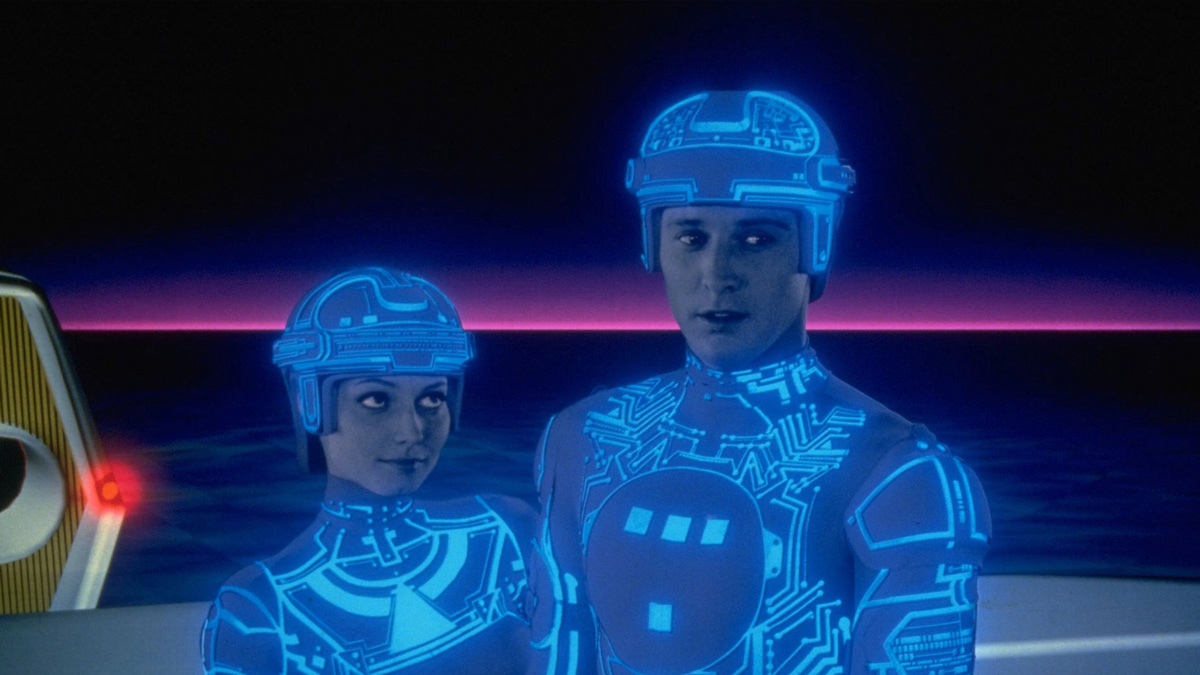
(c) Photofest / Getty Images
“Tron” The first full-scale CG movie in history, the long road to birth (Part 1)
2020.05.15
Triple Eye and John Whitney Jr.
After receiving the initial script from McBird, Lisberger made further changes and created a scenario he titled ``Tron.'' However, there was a big problem: ``How do we visualize this?'' However, it was not completely hopeless, and I had read that Information International Inc. (hereinafter referred to as Triple i) would solve the problem.
This company, Triple Eye, developed and sold microfilm recorders, film scanners, and printing composition systems. The president had originally been interested in computer art, and offered to collaborate with John Whitney Sr., known for the title background of `` Vertigo '' (1958). His short CG works such as ``Matrix III'' (1972) and ``Arabesque'' (1975) were produced using Triple Eye equipment.
"Vertigo" title background
One day, novelist Michael Crichton comes to visit the Motion Graphics company run by Whitney Sr. He pitched his original screenplay, Westworld (1973), to MGM and volunteered to direct it himself. He came to borrow the Matrix III film because he wanted to display CG images on the display in the control room during the movie.
At that time, he confessed a certain problem. The story of this movie was, ``At Delos, a theme park filled with robots that look just like humans, the robots malfunction for unknown reasons and begin killing the audience.'' Crichton wanted to depict this subjective shot of the robot with a mosaic effect, as if it were taken with a low-resolution CCD, but this was difficult in this era. Crichton goes to NASA/JPL (Jet Propulsion Laboratory) for advice, but is at a loss as they submit an estimate that exceeds the entire film's budget and production time.
Then John Whitney Jr., Whitney Sr.'s eldest son, says, ``Let me do it.'' He approached Triple Eye and was granted permission to use the facility only late at night. In this way, a one-minute video takes four months to produce. Apparently it took three hours to scan one frame of film.
Picture/Design Group's setback
Whitney Jr. took this opportunity to formulate a concept for a CG business. His partner was his close friend Gary Dimos. While a student at the California Institute of Technology, he took art classes taught by Whitney Sr. He then created a black-and-white wireframe CG animation, colored it with a Motion Graphics optical printer, and made a short film. During this time, he became friends with the Whitney family, and especially hit it off with Junior.
Dimos then worked as an intern programmer at Evans & Sutherland (E&S), a company founded at the University of Utah. However, in 1974, Sutherland decided to quit the University of Utah and E&S and founded Picture/Design Group (PDG) in Santa Monica. The company's goal was to introduce CG into Hollywood movies, and its members were President Sutherland, Whitney Jr. in charge of sales and marketing, and Dimos in charge of development. His first major task was to produce the pilot version (*5) of the theatrical feature film ``Cosmos,'' which was planned by astronomer Carl Sagan.
However, the person who had promised to invest in PDG died of a heart attack, and the oil shock recession that occurred at the time coincided with the company being unable to find new investors. Furthermore, production of the movie version of ``Cosmos'' was also canceled, and PDG went bankrupt after just nine months. Sutherland was probably so shocked that he stopped paying attention to CG after that.
*5 At this time, the 3DCG images scheduled included models of the galaxy and atomic structure. "Cosmos" was released in 1980.TV seriesbe done. At that time, a realistic 3DCG image of DNA appeared, which was created by James Brin of NASA/JPL. Brin was also a student of Sutherland's in graduate school at the University of Utah, where he helped develop software for Triple Eye. After that, in 2014, “Cosmos: Space-time and space' was created, and in 2020, 'Cosmos: many worlds' is being broadcast. ``Cosmos: The Many Worlds'' depicts the floating creatures of Jupiter that Sagan had originally envisioned.
In fact, Whitney Jr. and Dimos once filmed Sagan's Jupiter Creatures. They split from Triple Eye in 1981 and founded a company called Digital Production. The company also created a 3D video called ``Space Simulation Trip'' that was shown at the ``Hitachi Group Pavilion'' at the ``International Science and Technology Exposition'' (Science Expo - Tsukuba '85). The theme is a journey through each celestial body in the solar system, and the depiction of Jupiter's atmosphere in the play corresponds to that.

